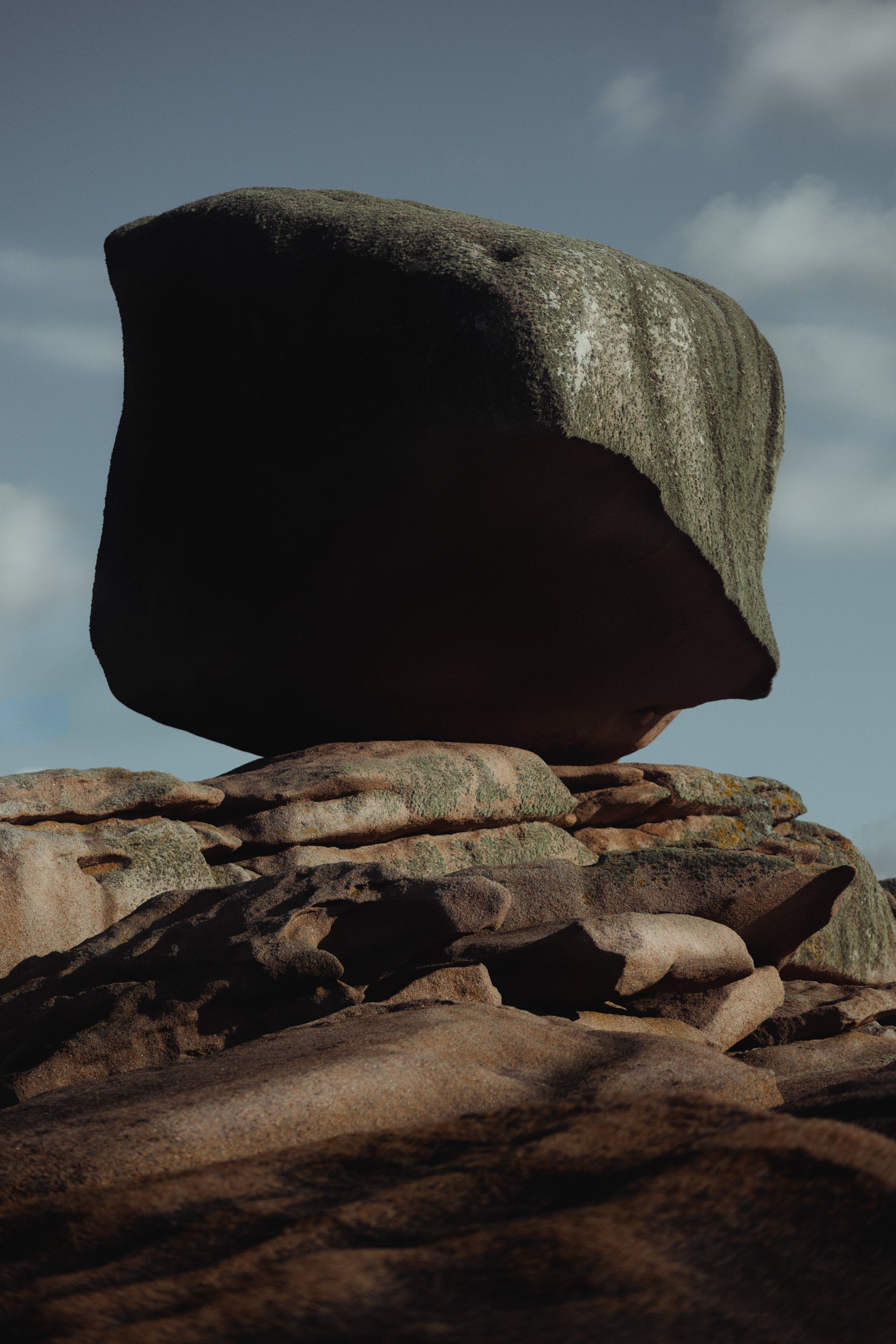Anatomy of the Myth
The human body facing Prometheus, Icarus, and Narcissus

Prometheus – This photograph draws on the Greek myth of Prometheus, the Titan who betrayed the gods by giving fire to mankind. In response to this act of transgression, Zeus condemned him to eternal punishment: chained to a rock for all time. Through these portraits of filmmaker Paul Veloso, I explore the visual tension between resistance and constraint — the body pressed against the stone, yet still standing.

Prometheus – This photograph highlights a symbolic site inspired by the punishment of Prometheus, chained by Zeus for giving fire to mankind. The rock becomes a silent witness to a founding myth, embodying the boundary between rebellion and punishment. Between raw matter and symbolic weight, the image questions the memory of bodies and ancient narratives.

Prometheus – This photographic series revisits the Greek myth of the Titan Prometheus, a symbol of rebellion who gave fire to mankind. For this defiance, Zeus condemned him to eternal punishment: chained to a rock, exposed to endless suffering. These portraits of Paul Veloso translate into images the tension between the power of action, the constraint of immobility, and the persistence of the body in the face of domination.

Icarus is the son of Daedalus, the one who designed the Labyrinth, prison of the Minotaur. After helping Theseus escape by giving Ariadne the thread, Daedalus and Icarus were themselves imprisoned within the maze. To flee, Daedalus crafted wings, warning his son not to fly too close to the sun. But Icarus, overcome by the thrill of flight, ignored him. The heat melted the wax, and he fell into the sea.
